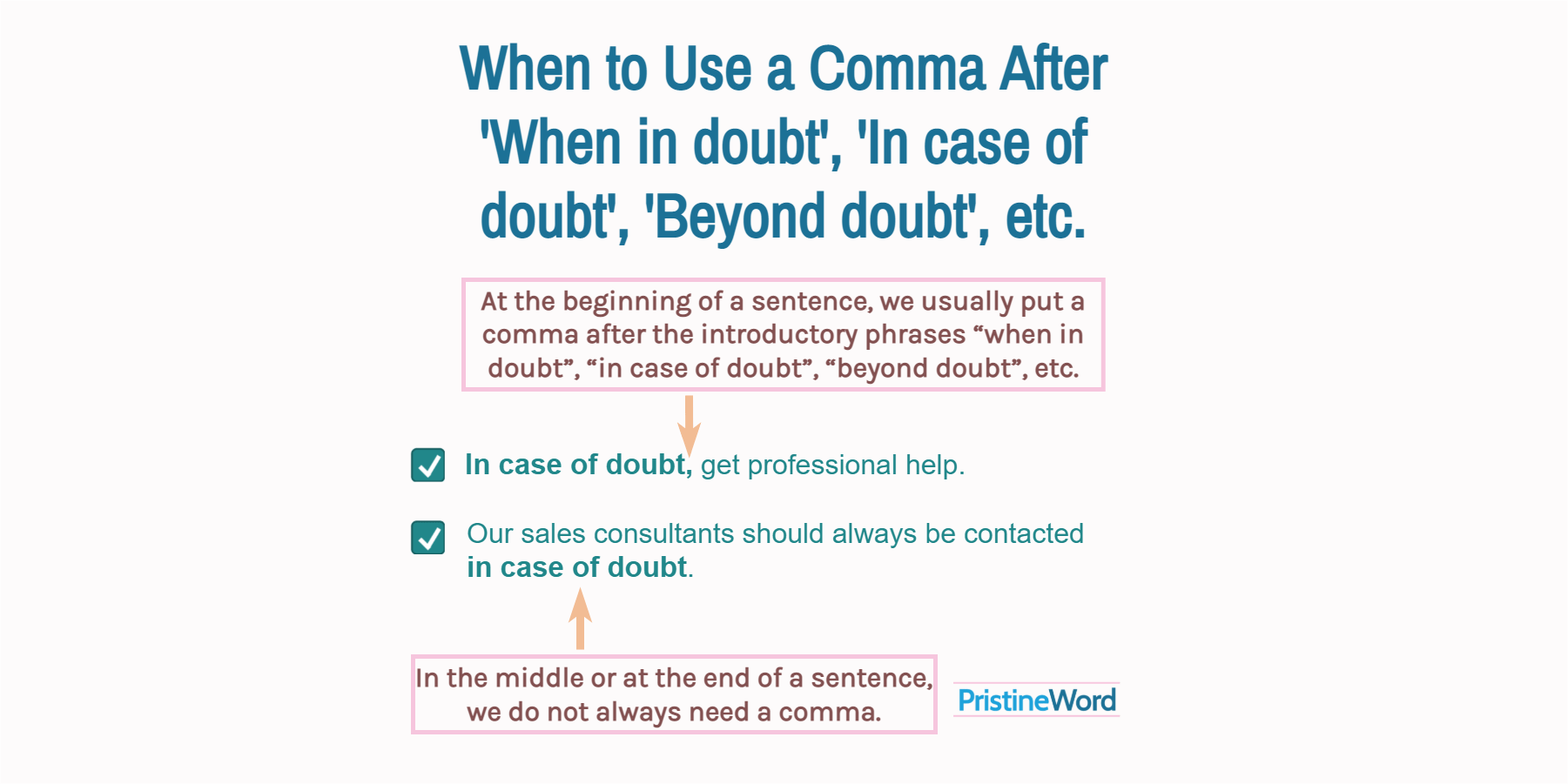At the beginning of a sentence, we usually put a comma after the introductory phrases “when in doubt”, “in case of doubt”, “beyond doubt”, etc.
At the beginning of a sentence, we usually put a comma after the introductory phrases “when in doubt”, “in case of doubt”, “beyond doubt”, etc.
In case of doubt, get professional help.
When in doubt, leave it out.
The comma is not strictly required, however, if the sentence is clear.
When in doubt go forward.
In the middle or at the end of a sentence, we do not always need a comma to separate these prepositional phrases from the rest of the sentence.
Our sales consultants should always be contacted in case of doubt.
But insert commas to add emphasis, signal a strong interruption, or use particular sentence structures where commas may be required.
I guess what I'm saying is, when in doubt, trust your instincts.
In the future, when in doubt, find out whether you could benefit from additional testing.
1. Commas at the Beginning of a Sentence
When starting a sentence with an introductory phrase, such as “when in doubt”, “in case of doubt”, “without a doubt”, etc., we generally add a comma after it.
When in doubt, do nothing.
The comma is not strictly necessary if the introductory phrase is short (no more than three or four words) and the sentence is clear.
In case of doubt ask your doctor.
But use a comma to introduce longer or more complicated sentences.
When in doubt, seeking a second opinion will help you make better health decisions.
Use also a comma after a long introductory phrase, like “beyond a shadow of a doubt” or “without a shadow of a doubt”.
Without a shadow of a doubt, it was the right thing for her to do in a situation like this.
2. In the Middle or at the End of a Sentence
The expressions “in case of doubt”, “beyond doubt”, “when in doubt”, etc. are not always preceded or followed by a comma in the middle or at the end of a sentence.
You can use this option in case of doubt.
But use commas to add emphasis or interrupt the sentence flow in mid-sentence.
Fingerprint analysis and forensic evidence proves, beyond doubt, that my client is innocent.
There are other sentence constructions where commas may be required. For example, use commas to separate a series of coordinate phrases.
In the future, when in doubt, double-check your work before publishing or sending.
The phrases “when in doubt” or “if in doubt” are often surrounded by commas in mid-sentence because they commonly signal a strong interruption.
Listen, when in doubt, leave it out and don’t take a chance.

